
By my count, between 1866 and 1966, for infantry forces the U.S. Army fielded two singleshot rifles, three bolt actions and three semiauto or select-fire rifles. The cartridges for which they were chambered numbered six. Every one of the eight basic rifle models and of course all their cartridges saw combat ranging from skirmishes in the Plains Indian Wars through many enormous planet-wide campaigns of World War II.
My rifle collection contains a specimen of all eight American infantry rifles. Both select fire spots – M14 and M16 – have been filled with semiauto substitutes. (However, I would like to say that I have fired full-auto M14s and M16s.) All my rifles have been shot with factory loads where available, and factory equivalent handloads have been developed for all six cartridges.
First up is the .50-70. Actually, in strict terms it was second. In 1865 the government-owned Springfield Armory first developed its conversion of .58-caliber rifle muskets for a .58-caliber rimfire. It went nowhere and was replaced the next year with a centerfire .50 Government Model 1866. It was a true conversion, meaning finished muzzleloading muskets were altered to fire metallic cartridges. Military .50 Gov’t issue cartridges carried 450-grain bullets over 70 grains of black powder. Velocity was rated at 1,250 fps.
Two other versions followed. The Models 1868 and 1870 were not conversions. Their actions were built fresh but parts such as lock plates were left over from musket production. For instance, my Model 1868 lockplate bears the date “1863.” Model 1868s had 32.63inch barrels for an overall length of 51 inches. Weight was 9.5 pounds. Sights were a simple blade front and an open rear. Because these .50-70s had breechblocks that tilted upward, they gained the nickname “trapdoors.”
This story is from the January - February 2020 edition of Rifle.
Start your 7-day Magzter GOLD free trial to access thousands of curated premium stories, and 9,000+ magazines and newspapers.
Already a subscriber ? Sign In
This story is from the January - February 2020 edition of Rifle.
Start your 7-day Magzter GOLD free trial to access thousands of curated premium stories, and 9,000+ magazines and newspapers.
Already a subscriber? Sign In
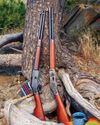
CIMARRON .32-20 Short Rifle & Carbine
In the heyday of Winchester Repeating Arms Company lever guns, it offered muskets, standard rifles, short rifles and saddle ring carbines.
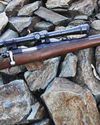
Remington's Model 722 and .222 Cartridge
It's easy enough to define what a varmint is, those pesky critters that tear up pastures, flower beds and all kinds of expensive crops people need for various reasons - most importantly, to make a living and/or something with which to feed themselves.

Coyote Bullets
What is Best for You?
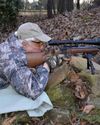
Remington's 5mm Rimfire Magnum
Shooting a Classic
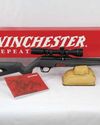
Winchester's New Wildcat
The Ultralight Rimfire Varmint Rifle

.223 Remington from .30-30 Winchester?
Multitasking for Varmints

LOADS FOR A .22 TCM
The .22 TCM first appeared commercially in 2012, chambered in a Rock Island Armory 1911-style handgun.
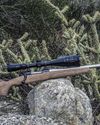
Everybody Loves Velocity
The 4,500-fps WSSM Project

A BOLT-ACTION FRANCHI 224 VALKYRIE
Testing New Loads
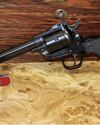
.22 Winchester Magnum Rimfire
Shooting Revolvers